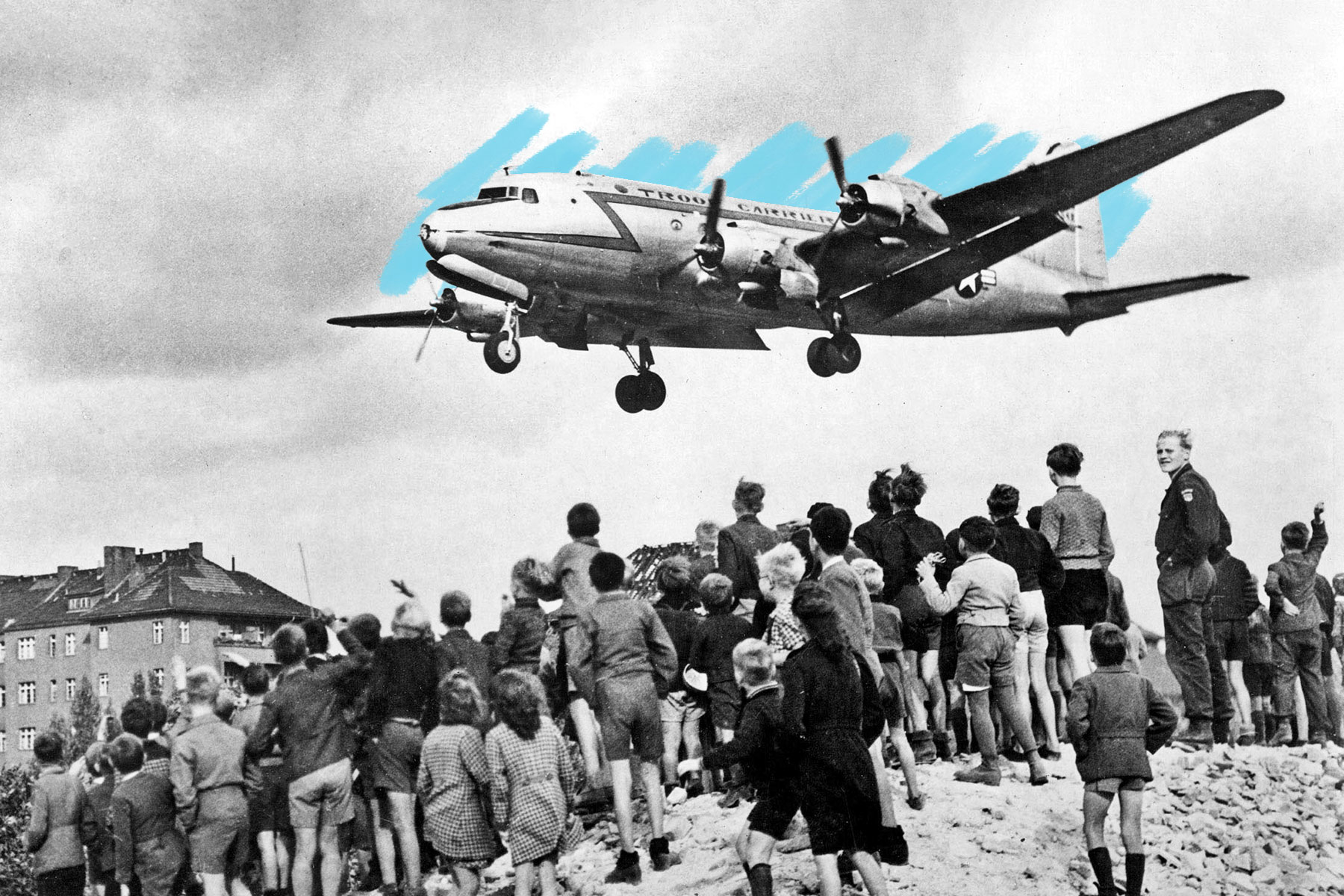At the height of the Berlin Airlift, a plane landed in Berlin every 30 seconds.
The first major international crisis of the Cold War began on June 24, 1948, known as the Berlin Blockade. After World War II, the German capital was divided into four occupation zones, controlled by the U.S., U.K., and France in the western part of the city, and the Soviet Union in the eastern sector. But tensions began to rise when the U.S. and U.K. combined their zones to form “Bizonia,” which the Soviets were concerned would pose a threat by concentrating power in West Berlin. This concern deepened in June 1948, when the Western Allies introduced a new currency, the deutsche mark, into Bizonia and the French zone without consulting the Soviet Union. In response, the Soviets issued their own currency, the ostmark, and blocked all rail, road, and water access to Berlin’s other three zones. More than 2 million civilians lost access to food, medicine, fuel, and electricity due to the blockade.
Two days later, the United States and Britain initiated a counterblockade to prevent rail traffic from reaching East Berlin. They also found a way around the roadblocks: They took to the skies. So began the Berlin Airlift, also known as Operation Vittles, a 15-month air campaign to deliver food, fuel, and other supplies to West Berlin. Over the course of the operation, pilots and their crews made more than 270,000 air drops to the city. At the height of the airlift in the spring of 1949, an Allied supply plane landed in West Berlin an average of every 30 seconds. The Berlin Airlift was so successful that Soviet Premier Joseph Stalin lifted the blockade in May 1949, realizing the Western Allies could continue their supply missions indefinitely. The operation is now considered the largest humanitarian airlift mission in history.







